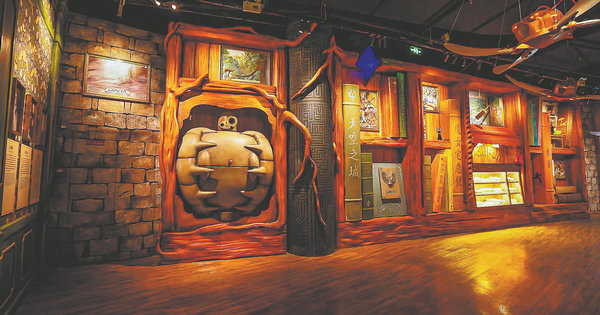

Continuing inside is like traveling back in time, as fans see their favorite characters and settings from Miyazaki classics over the past 40 years emerge one after another.
Around one corner, visitors might encounter the robot from Laputa: Castle in the Sky (1986) hidden among towering trees, and walking down another path, they might come across the mouthwatering bakery from Kiki's Delivery Service (1989).
What might dazzle fans the most is taking the elevator to the main exhibition area that has been specially designed to display props and stills of The Boy and the Heron. Underneath the massive glass ceiling, dozens of "Warawara" — the white, blob-like spirit creatures from the movie's magical in-between world — are suspended, appearing to gently welcome them.
"Such a design has never been attempted in previous Japanese exhibitions. There's a divine feeling when the sunlight filters through the glass roof during the day, which deeply moves me," says Daisuke Nishikata, the executive director of Studio Ghibli.
Nishikata also reveals that The Boy and the Heron, which was released in Japan last July, has taken the shortest time of all Miyazaki movies to be released in China.
Saying that he has discovered that the director has a large fan base in China, Nishikata says that he wishes the exhibition and future cooperation with Chinese partners will bring more joy to Chinese audiences, and allow more people to get to know the studio founded by Japanese producer Yasuyoshi Tokuma in 1985.
An entire wall at the exhibition takes a retrospective look at Tokuma's dedicated attempts to boost cinematic exchange between China and Japan.